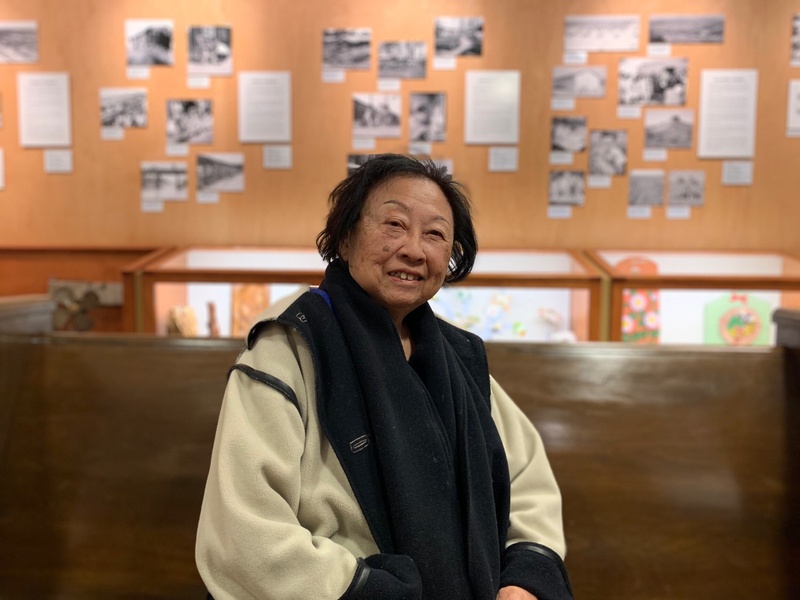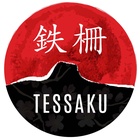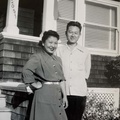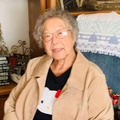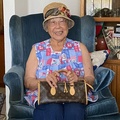“My family, my parents became pro-America immediately. Their whole psyche was completely turned around.”
— Setsuko Asano
Setsuko (Izumi) Asano was born on the auspicious day of March 3rd, 1932 or hinamatsuri, the annual celebration of Girls Day in Japan. Perhaps it was fitting that Setsuko’s birth would fall on such a day, as she was last born in a line up of five daughters in her family, with no sons.
Sets was born to two Issei parents; her mother was a skilled midwife and nurse, and her father was a journalist, writing, and editing for a Japanese language newspaper distributed primarily to the farming community. Her mother was an exceptionally strong woman, living through truly difficult events that would not only affect her as a Japanese national but as a person of Japanese ancestry living in the United States. At 18-years-old, she was conscripted to help wounded or ailing Japanese soldiers during the invasion of Manchuria, and also lived through the WWII incarceration.
After the outbreak of the war, the Izumi family was uprooted from their home in Boyle Heights, Los Angeles to the forested area of Rohwer, Arkansas. When an unexpected job was offered to her father by a kindly shrimp entrepreneur in Louisiana, the Izumi family ended up staying and living in the South, a rarity for most Japanese Americans and an experience Setsuko speaks fondly of to this day.
“The South, they’re very hospitable, they think of you. They're friendly. I loved it. I could live there all the time. As it was, I lived there fifteen years.”
In her own right, Setsuko would become a successful professional in the sciences as a microbiologist. After going to school at Louisiana State University, Setsuko would go on to work for the state’s health department, eventually moving to Los Angeles with her mother where she worked at St. Francis Medical Center in Lynwood.
Setsuko’s daughter, Sandy Mar, was present at the interview to help fill in gaps and give context to her mother’s oral history. All responses below are given by Setsuko, unless noted with Sandy’s name.
* * * * *
My name is Setsuko Evelyn Asano, born in Los Angeles, California, March 3, 1932.
Can you describe a typical day growing up in Los Angeles? What were your parents doing and what was your family like?
My father was a journalist working for the local Japanese vernacular newspaper. And my mother was a housewife. We lived in Boyle Heights, which is typical L.A. community.
And were they both Issei?
Yes from Yamaguchi-ken.
Did they meet before they moved to the United States?
Yes, yes. It was one of those fixed marriages.
Do you feel they were they happily married?
Oh yes.
So your father, what kind of journalism did he do?
He was the editor of the Japanese vernacular newspaper, the Sangyo Nippo.
I see. So a very educated man.
I guess so if you can manage a newspaper, right? Mostly a paper for the farmers, the local farmers in that area.
So then you grew up in L.A. How many other siblings did you have?
I had four but they're all deceased. And I was the last one, a menopausal child, nine years late. The next sister's nine years older than I am.
And so you had two sisters or how did it break down?
They're all girls.
Would you say that you grew up fairly comfortable in bor, you know, you lived a pretty comfortable life before the war?
I would say it's a typical Japanese life, I think. You're going to school constantly. Grammar school. And then as soon as I come home, we’d go to Japanese school five days a week. Everyday.
So you are fluent then?
Enough to get by I would say.
Did you mostly speak to your parents in Japanese?
Yes. That's how we communicated because they couldn't speak English.
And so right before Pearl Harbor in 1941 you were how old?
I was 10-years-old. I don't remember much.
Do you remember the day at all?
You know, all I remember was everyone was hovered around the radio. And then we had to put up sheets for, I guess at night, you know, couldn’t have any lights on. That really stuck in my mind.
In case there were air raids?
I thought, oh, that's all I remember is putting up the sheets.
Did you feel afraid? Did you kind of understand that?
I had no idea. I was just there.
And were your four sisters still living there?
No, I was the last one. Nine years later. The last one came so they all had their own families. They were all gone out of the house.
So just you and your parents right at the house. And do you recall anything that your parents might have said or how they reacted after?
I have no recollection.
So when do you start remembering the kind of memories that involve going to the assembly center or camp? When do the memories kick in for you?
I still remember vividly the horse stables, that really struck me. And then to see the grandstand at Santa Anita.
What do you remember about having to live there?
Well, I saw some of the older adults making camouflage nets right at the grandstand. I remember that. And then more stables, of course. [My family was in] the regular stable. I still remember, Avenue 68. And a blue mess hall. And it's interesting, we went on a tour after this, when we returned and we passed that same mess hall. And where we used to go where the jockeys go now. And they still use that mess hall. I remember that vividly. And I still remember apple butter to this day, I think because that's all we had. Apple butter on toast is what they fed us.
And how about your sisters and their families? Were you together with them in there?
They lived in Detroit, the oldest one.
Did your other two live in Los Angeles still?
One lived in Buffalo, New York. Her husband was a translator. So International Institute was what it was called in Buffalo, Japanese translator. And then the next sister, the third one, I guess she was next. [Masako], she was with me. We’re nine years apart so I can’t recall.
Going back to a little bit, what happened to your home and all of your possessions?
I have no idea. I can't remember anything. I was quite young. I don't know.
But you were probably renting a house or something?
Oh yes, I'm sure.
And so then, going to Rohwer. Do you remember the train ride out there?
I remember that, it’s very vivid. It took 10 days just to go to Arkansas. We’d always have to stay on the side tracks and wait for the regular train to go. And it was interesting. My older sister wanted — she's crazy, but she wanted to get postcards and get off in Texas. And they were there with the rifles and they wouldn't allow her to leave. She was weird. She just had to get a postcard. You know? She thought she was on a tour! She's going across the country.
And what else about the train ride? Was it uncomfortable?
Well, we sat up all the time. We couldn't, you know [lie down]. We’d have to be on the side tracks and wait for the regular trains to go by. We were just low priority, so we'd be waiting. Constantly waiting. It was a long trip, ten days. I thought they treated us like cattle. Really. That's what it boils down to.
And you had no idea where you were going?
Well, no, I was too young. I just remember, “Oh, train ride!”
So you kind of felt protected, you didn't feel any fear at this point?
No, at this point it’s just a fun ride. You know, joy ride.
* This article was originally published on Tessaku on March 8, 2020.
© 2020 Emiko Tsuchida


